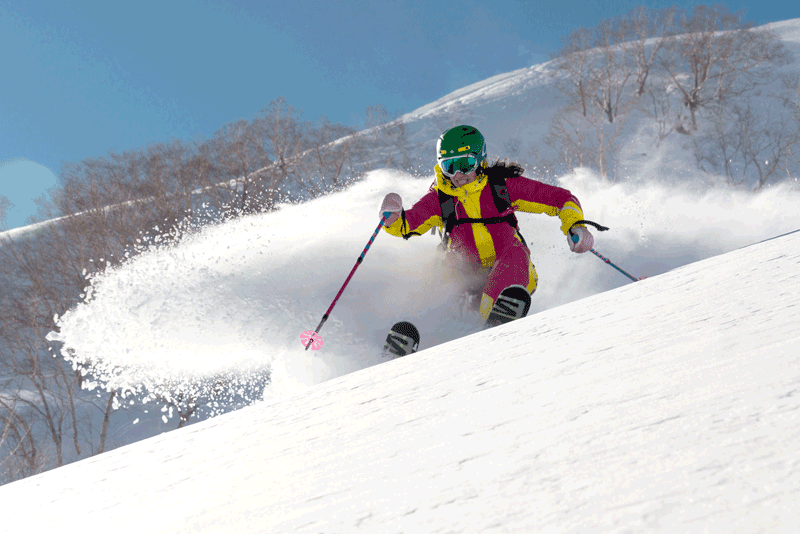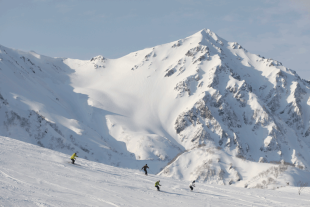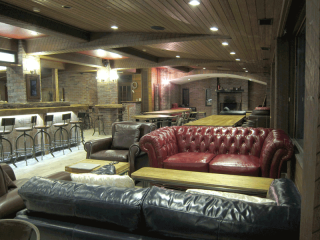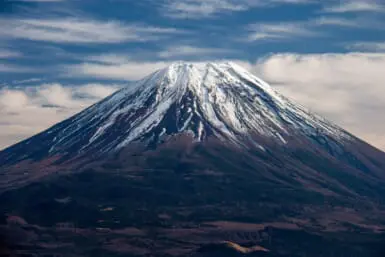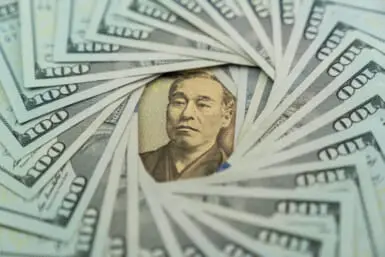Between the ski and snowboarding courses and an abundance of accommodations, Hakuba Valley offers plenty to do on—and off—the slopes.
Winters in Tokyo always leave me hoping to escape to the mountains, where I can trade crowded subways for fresh air, snowy trails, and a rejuvenating onsen dip. One of the places that was on my to-do list was Hakuba Valley, a once-secluded gateway to the Japanese Alps that is now a premier global ski destination complete with world class terrain, modern accommodation, and first class dining.
Ready to get away one afternoon, I took a short Shinkansen ride from Tokyo to Nagano, followed by a bus to the heart of Happo village, and I was transported from the neon lights of the city and was breathing the crisp mountain air in just about three hours.
During my first evening, I strolled through the narrow windy streets admiring the cafes, restaurants, shops, and bars, each featuring a mix of alpine styling and Japanese sensibility. The Valley has evolved since skiing was first introduced to the area by Austrian mountaineers in the late 1920s, and while skiers might not have to climb the mountains themselves any longer, Happo Village still maintains an Old World atmosphere.
Of course, by the next morning I was ready to hit the slopes. The area played host to the 1998 Winter Olympics, and it’s a snow paradise: there are 11 ski resorts with more terrain, vertical rise, and advanced slopes than you can find anywhere in Japan. A common lift ticket can be used at all resorts and you can travel from resort to resort via shuttle bus. Happo-one is one of the most popular resorts in Hakuba—and also one of the country’s largest. It offers more than 1,000 vertical feet and is blessed with breathtaking, panoramic views. Another impressive resort is Cortina, which offers a ski in ski out hotel that is just 10 meters from the lift gate. Meanwhile, Hakuba47 is a sprawling complex that offers a wide range of slopes and a snow park for free ride skiers and snowboarders.
Families and beginners can enjoy the snow with convenient rental shops and multilingual ski and snowboarding schools. Spicy Rentals is a long time resident ski and snowboard rental shop with seven stores scattered throughout the valley where you can pick up or drop off your skis or board at any of their locations. If you’re looking for a tune up or wax job, be sure to stop by Rhythm Snow Sports. Their overnight service is a convenient option and the crew had my board ready to hit the mountain early the next morning.
Along with the wide variety of accommodation, there is a diverse mix of entertainment and dining options on offer after a day in the snow—everything from Japanese and international restaurants to private chefs, but I decided to try out one of the newer restaurants on the scene.
Step into Hakuba Brewery and you may feel as if you’d just set foot in your local pub. Friendly staff and owners “the Two Dans” have created an atmosphere that is welcoming to locals and visitors alike. The warm wooden interior is constructed from reclaimed Japanese oak and the roaring fireplaces give the Brewery an authentic vibe. The Hakuba Pale Ale is one of the region’s finest craft beers: produced on site from natural spring water, it is a perfect addition to a menu boasting the latest dishes from a team of international renowned chefs—you simply can’t go wrong with their lamb stew. A convenient free shuttle bus service was much appreciated after a warm evening by the fire.
A visit to Hakuba wouldn’t be complete with a soak in a local hot spring. The recently remodeled Happonoyu onsen at the base of Happo-one ski resort is perfect for soothing sore muscles at the end of the day. The unique high alkalinity levels of the thermal waters are renowned for their healing properties. Relaxing in the open-air bath surrounded by the peace of the mountains left my body feeling revitalized and relaxed—but in my mind, I was already preparing my next visit.
Main Image: Skier Julie Nieuwenhuys, Photo by Caroline Vanthoff
Sponsored Post

